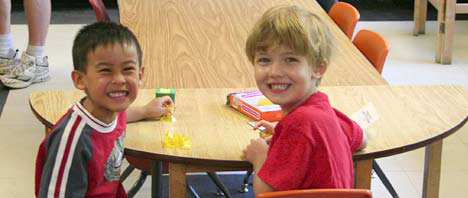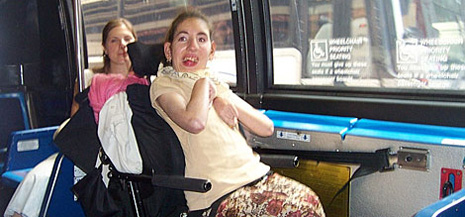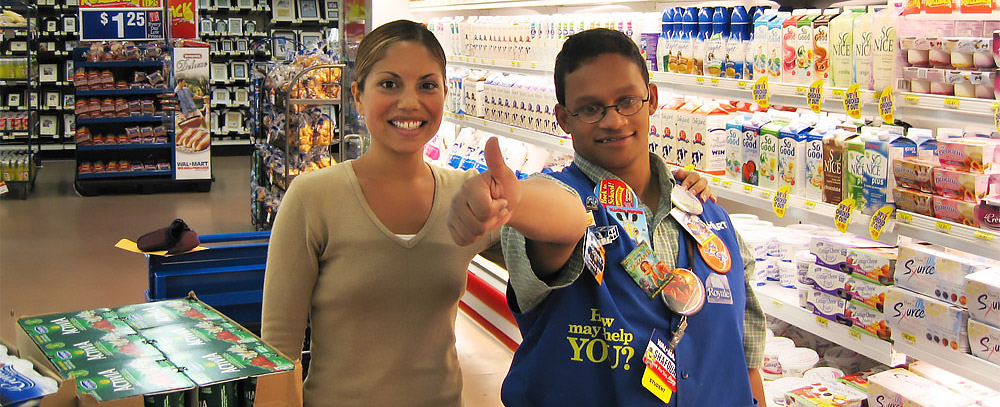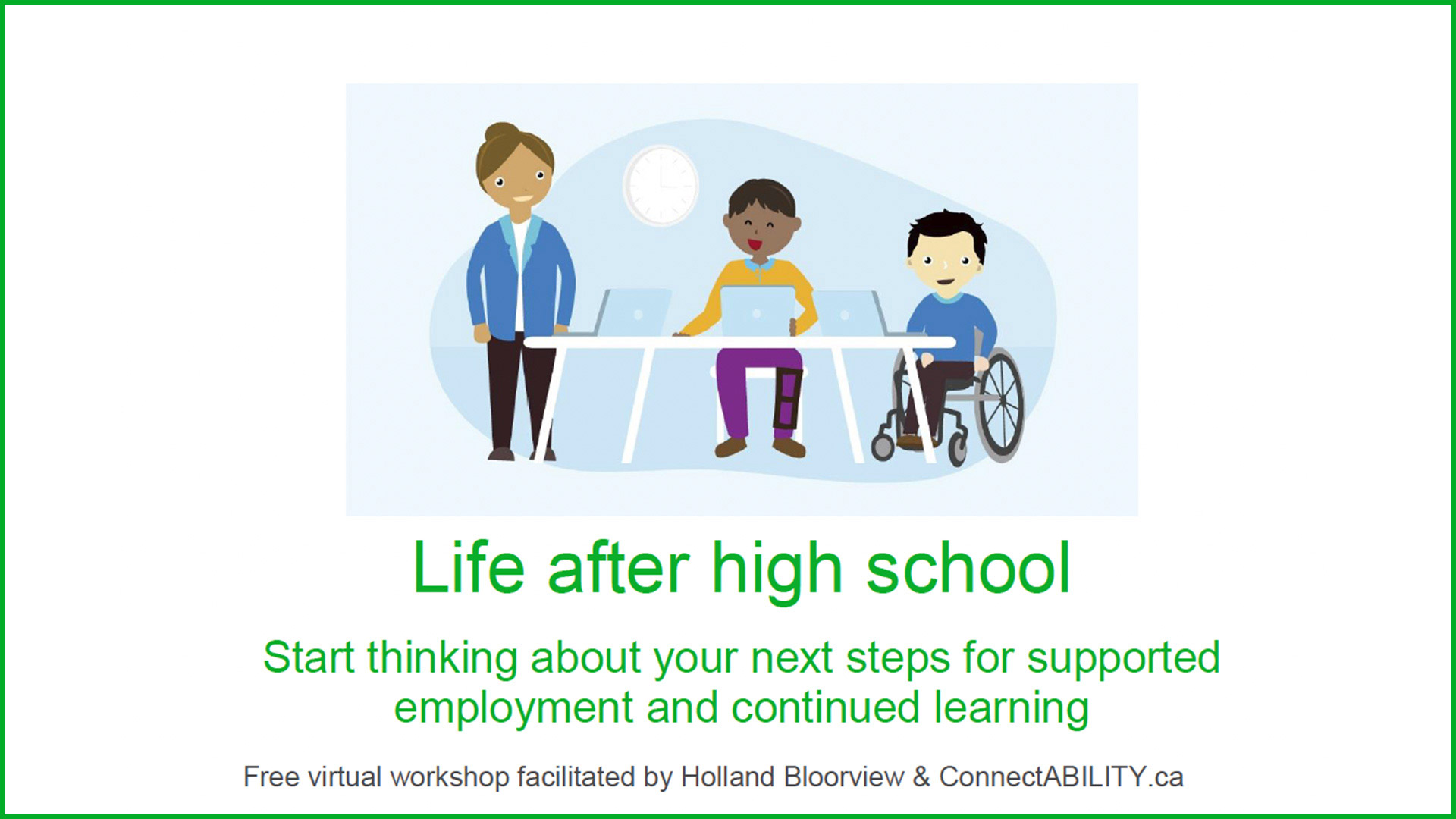A workshop designed to take a look at using positive attention and ignoring at the right moments to help your child learn new skills and practice behaviour that will strengthen their relationship with you and others.
Creating Rules That Work

You may remember the saying, “Rules are meant to be broken.” Although we all break rules from time to time, most people realize that rules are meant to protect us. For example, if we ignored the “rules of the road”, there would be a lot of accidents and injuries. In order to make sure that we follow these rules, there are consequences for breaking them.
We create rules to keep children safe and prevent them from doing things that disturb or harm themselves, other people, or property. Young children need to learn why rules are important and what will happen if they break a rule. When rules are enforced in a firm, kind, and consistent manner, children learn that they are responsible for their behaviour.
As a parent, teacher or early childhood professional, it can be frustrating when your child does not follow the rules, especially if it seems like she is breaking them on purpose. You can help your child behave in a positive way by creating rules that are easy for her to understand, follow, and remember. When your child does break the rules that you have established, the consequences used need to guide and teach rather than shame or humiliate her into behaving “properly”.
Why Children Break Rules
Children break rules for many different reasons. Here are some examples:
- There are too many rules for them to remember.
- They do not understand the rules.
- They are not motivated to follow the rules.
- They cannot see or hear the rules.
- They need help to do what is being asked.
As you can see, children who break rules are not always misbehaving on purpose. The suggestions in the next section can help you create rules that will help your child or children understand what is expected.
Creating Rules that your child can follow
Keep it Simple
Young children respond best to a few simple rules that are clear and specific. When you have too many rules your child will have difficulty learning and remembering them. This will then make it more challenging for you to teach and reinforce the rules.
Try not to give your child more than three to four rules at once. Also, provide simple reasons for each rule to help her understand why each one is important. It is a good idea to post pictures illustrating your rules where your child can see them. Some typical rules you can display might be:
- Use a “quiet voice” when we’re inside.
- Walk inside the house/building.
- Sit at the table to eat your lunch.
Remember to consider the following when setting rules for your child:
- Make sure the rules are age and developmentally appropriate. For example, a rule for a six year old may be “Tidy up when you’re finished playing with your toys”. A more age appropriate example for a three year old may be simpler and more specific, such as “Put blocks in the bin when you’re finished playing”.
- Make sure that the rules you establish are ones that you, yourself will follow, to set an example for your child. For instance, if your rule is: “The computer stays off while we eat our lunch.”, then make sure your child doesn’t catch you sitting in front of the computer eating your lunch.
- Expect that at times your child will forget the rule. Be supportive in reminding them and follow through on your expectation. For example, if your rule is “Clean up when you finish eating”, and they forget to do this, provide them with a gentle verbal reminder, visual cue, or gesture such as lifting the plate, to assist with following through.
- Be very consistent in applying the rules so your child will get the message that you mean what you say and this rule is here to stay!
- It is also important to try and link the rules at home and school. That way the rules are more consistent and less confusing.
Be Positive
Most young children like praise and want to please the important people in their lives. Telling and showing your child what they can do is more effective than telling them what not to do. Whenever you tell your child is not to do something, show them a more positive behaviour. For example, if they are hitting their friend, remind her, “Touch gently – hitting hurts,” and then show them how to touch gently perhaps by patting your hand. Praise them for listening and behaving positively.
Here’s another example. James and Vicky are playing in the sandbox. Vicky is poking James’ sand castle and trying to make it fall down. Vicky’s mother/teacher takes her hand and says, “Hands are for helping,” while guiding her to push sand over to James. Later, Vicky’s mom/teacher sees her helping James and says, “I like how you are helping James build the castle.”
Use Pictures
Create visual “reminders” to encourage your child to behave positively. You can display a picture reminding your child what to do. Take pictures of your child doing the “right” thing or use. Pictures of favourite cartoon characters doing positive things can also be used.
Let’s look at the example of Malik and his friend Malcolm. Malik grabs toys from Malcolm when he wants to play with them. Both children like the cartoon character “Barney”, so their father/teacher put a poster of Barney sharing with friends on their bedroom wall. When Malik begins to grab toys from Malcolm, their father/teacher points to the “Barney” poster and reminds Malik to, “Share”.
Use Gestures
Gestures are useful because they can remind a child of the rules without drawing attention to or singling them out. Get your child’s attention by making eye contact with them, calling their name, or touching them on the arm or shoulder. Gestures can also be combined with spoken words if it is difficult to get your child’s attention. Remind your child what to do by pairing, or replacing the following sentences with gestures:
- “Sit.”Tap the floor or the seat of the chair you want your child to sit in. Make a downwards motion with your hand.
- “Wait!”Put your hand up like a stop sign.
- “Quiet,” or “Talk softly.” Put a finger in front of your lips or make a downwards motion with your hands.
- “Listen.”Point to your ears.
- “No!”If you see that your child is about to do something that she shouldn’t be doing, simply shake your head.
Don’t forget that gestures can also be used to give praise! Smile, nod, or give your child the “thumbs up” when you “catch” her being good.
When Children Break Rules
There will be times when your child breaks rules “on purpose”. This behaviour is typical. Young children often want to “test” adults to see how much they can “get away with”. When you create a rule for your child, think about what you can do if she breaks it. This is helpful because it is sometimes difficult to think “on the spot” when your child is in the middle of a tantrum.
Here are some steps you can take when your child misbehaves:
- Let your child know that their behaviour is not acceptable.Let your child know what behaviour you want them to stop and why it cannot continue. If your child is doing something that can hurt herself or another person, physically remove them from the situation right away.
- If necessary, remove them from the situation until they calm down.If your child is very upset, they will not be able to understand what you are telling them to do. Give them some time to cry or have a tantrum in a place where you can keep an eye on them.
- Remind them of a more positive behaviour.Let your child know what they can do in the future and encourage them to apologize, repair any damage, or clean up. Praise your child when they follow the rules.
Here is a home based example of the steps in action:
Grandma is looking after Ravi and his older sister Nisha. Ravi and Nisha are on the floor building with blocks while Grandma is sitting nearby watching them play. Ravi begins throwing and kicking blocks. Grandma stops Ravi by taking his hand and saying, “No throwing. Blocks hurt.” Ravi begins to scream and cry as Grandma leads him away from the blocks. When he has calmed down, Grandma says, “Let’s tidy up the blocks.” Ravi helps put some of the blocks away while Nisha continues to play. Grandma praises Ravi for tidying up and then offers him two new activities to choose from that he can play.
If you feel that your child’s behaviour is dangerous, or difficult to control, please contact a professional. Speak with other people involved in your child’s life; discuss the problem and what steps to take next.
With rules in place that are easy for everyone to understand and follow, children will come to know what is expected of them.
3D Music
This music making game encourages improvement of fine motor skills and intuitive thinking!
Farm Sounds
Listen to the sounds of the animals at Riverdale Farm!
Matching Game
This game develops short term memory and association skills
Music Workshop
Music crosses all barriers, and is a valuable tool. There are 3 levels in this workshop that teach parents how to use music everyday!
Money Magic
A coin recognition game.
Squag
squag.com/
[skwag] is a new application designed specifically for tweens and teens on the autism spectrum.
Looking at Needs and Overcoming Obstacles

The most exciting part of creating a plan is the opportunity to dream, develop goals and brainstorm all of the potential possibilities that motivate a person. On the flip side, and not necessarily as exciting, is having to look at the needs of a person’s day-to day life and the ways in which needs can be accommodated and obstacles overcome. Although, this does not take a lot of time during a plan, it is just as important so that supports can be identified and planned for when looking for opportunities.
Each person’s needs are unique. Here are some examples to give you an idea of things to think about.
Daily Routines:
Thinking about a person’s existing daily routine is very important when looking and planning for potential opportunities for the future.
A number of questions to ask when thinking about daily routines are:
- Does the person rely on a structured daily routine?
- How does the person adjust to change in their routine? How much preparation do they need to accept change in their day-to-day life?
- What time of day works best for the person?
- Are there medical considerations that affect the person’s routine? For example, if the person is diabetic they may need to eat at certain times of the day or more frequently throughout the day.
By looking at these factors, you improve the chances that the new opportunity will compliment the existing routine.
Length of Time:
When thinking about new opportunities, it is important to consider the person’s physical stamina and ability to focus. Maybe the person is only physically able to handle a 2-4 hour shift at a work placement as opposed to an 8 hour day. The goal is to make the chosen activities as enjoyable and successful as possible instead of just trying to fill up an entire day of activity.
Transportation:
Looking at how the person will be traveling from point A to B will also play a role in finding the most appropriate activity and location and should be considered before confirming the new opportunity. It may be a great opportunity, but if you don’t know how the person will get to and from the activity then it is not necessarily the right option.
Here are some questions to think about:
- Is there someone to take the person to and from the activity?
- Is the person able to take public transportation?
- Will training on public transportation be needed?
- Is the activity accessible from public transportation?
- Are services such as Wheeltrans needed?
- Will the person require a support staff to take them to and from the activity? Is this affordable?
Safety and Security:
Think about the kind of activity that the person is getting involved in. If it is a work placement at a large retail store, is lifting heavy boxes part of the training? If so, is the person capable of carrying heavy objects? Will there be any hazardous materials that the person may come into contact with? If so, is there training provided by the work or volunteer placement?
Another area of safety and security is related to our last topic; transportation. If the person travels in the community by themselves, do they know how to use a public telephone if something goes wrong? Does the person recognize who they can direct questions to if they are in trouble, such as police officers or public transit employees?
As you can see there are many areas of concern that need to be addressed prior to committing to a new activity. Entering the community, can be an overwhelming experience at first but by preparing for the transition and covering all bases the person will soon realize that it can be a very safe and meaningful experience.
Coaching & Support:
Knowing what kind of supports the person needs before beginning the new activity is also an area that needs to be considered carefully. Often times, when going into the community and entering a work or volunteer placement initial support and coaching are needed. This is to ensure that the person is receiving one-on-one training in the area that they are working or volunteering in. Once training has begun, the support staff can also determine how long support will be needed. Some people only require initial support which is then decreased, while others will require support throughout their placement. Support may also be needed for recreational activities, either to get to and from the activity or during the activity. The need for support will be clear when an activity is decided on. Once you now what kind of support is needed you can begin to look at the kinds of resources available for this opportunity.
Amount of Training Needed:
It is always a good idea to think about what kind of training is involved in an activity, especially if it is work or volunteer related. Some volunteer positions require volunteer orientations and police checks before beginning to work. Police checks can sometimes take up to 6 weeks to be completed which means it will delay the start date for the person.
Accessibility:
Going to see the environment in which the activity is being held and asking the right questions is also very important when looking for new opportunities. A person’s place of work should be accessible in all the ways they need it to be.
Things to look for are:
- Can the person access the building from the outside?
- Are there ramps and elevators?
- Are there accessible washrooms the person can use?
When the above questions are looked at, you will have made sure that the person’s needs have been considered and met.
How to Problem Solve:
There is no right or wrong way to problem solve in order to overcome potential obstacles. Perhaps, you may choose to have a follow up meeting (with some or all who were involved in the planning meeting) once decisions on potential activities have been made. If this is done, create a list of possible obstacles that may arise and go around the group to see who can help ensure that the obstacles are overcome. This may just mean making a few phone calls, visiting a site or seeing if anyone within the circle can support the person at their activity. As stated earlier, you may just realize that one of the activities is just not suitable for the person. This simply means that it is time to look at an alternative. Trial and error is the best way to see what works and what does not.
Life can have many obstacles when planning for the future but with careful consideration and the assistance of a strong support network there are always ways to overcome them.
Planning for Life After School

This is a series of workshops and tip sheets designed to help plan for life after school. It is important to go through all of the workshops in order as each one prepares us for the next one.
Workshops
Getting Started Early
It’s never too early to start thinking about the future
Gaining Experience
Starting early will provide a person with a wider range of choices
Getting Ready
Prepare for the planning meeting by exploring what people are interested in experiencing
Organizing the Planning Meeting
Important questions to consider for a successful meeting
Tip Sheets
- What is Person-Directed Planning With the shift from institutions to individuals, it is important to consider how to get people involved in planning for their futures and expressing what they want.
- The First Job and Beyond Gaining work experience is a great way for someone to explore occupations that might interest them in the future.
- Exploring Funding Opportunities Where to find individual funding sources to assist someone who wants to access work, volunteer and recreational opportunities.
- Life Beyond Work Exploring interests, developing skills, establishing social relationships (independent of your family circle) and having fun!
- Looking at Needs and Overcoming Obstacles Looking at the needs of a person’s day-to day life and the ways in which needs can be accommodated and obstacles overcome.
- Creating Employment and Training Opportunities in your Community Tips for networking within your community
- How to Support Someone at Work Often times when a person with an intellectual disability is beginning any new activity, whether it is work or recreational, they will need different kinds of supports to transition them into the activity.
- Sample Invite for Planning Meeting This a sample invite that you can printout and use to invite people to your planning meeting.
- Success Stories As planning begins for the future it is always nice to hear about other people’s stories and the success that they have achieved after planning began for them.
- Transition out of High School
Life after high school
In this webcast we cover:
- Accessing employment supports and resources
- Other learning options and programs
- Related online community resources
- Hearing from staff, families, and partners
Interactive
Person Directed Planning
An interactive presentation on Person Directed Planning tools and resources.
Videos
Transition Practices: Transitioning Out of High School
Ministry of education mandated items
Mary Ierullo, ASD Consultant, School Support Program, Surrey Place Centre
Transition Planning for exit out of high school
Michelle Murphy, Autism Support Teacher, Autism Programs & Services Department, TCDSB
DSO eligibility
Melanie Randall, Community Liaison Service Navigator, Development Services Ontario
MagnusCards
MagnusCards is a free app that combines a proven method of instruction (Social Stories) with elements of game design to help people learn life skills. Read more >>

